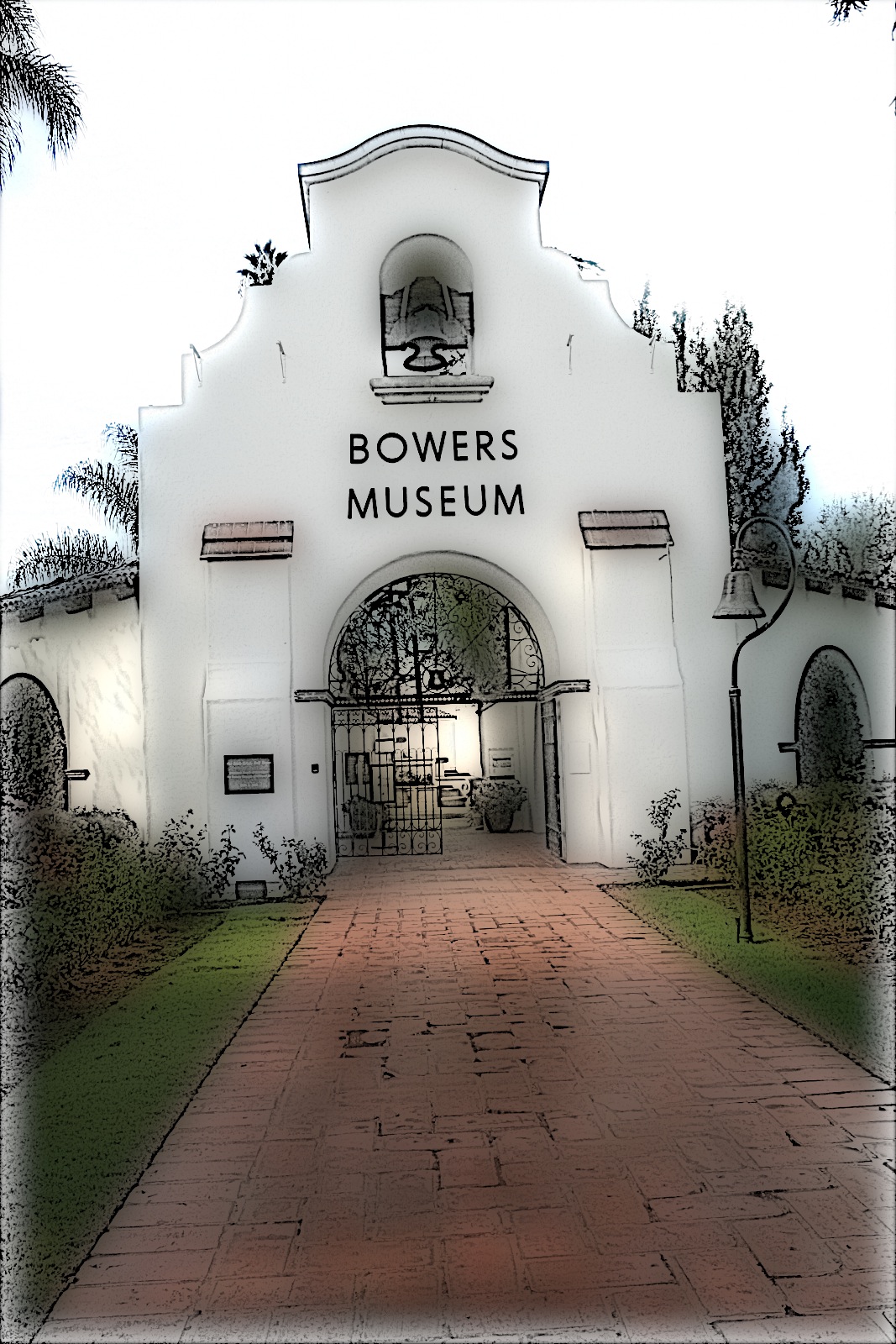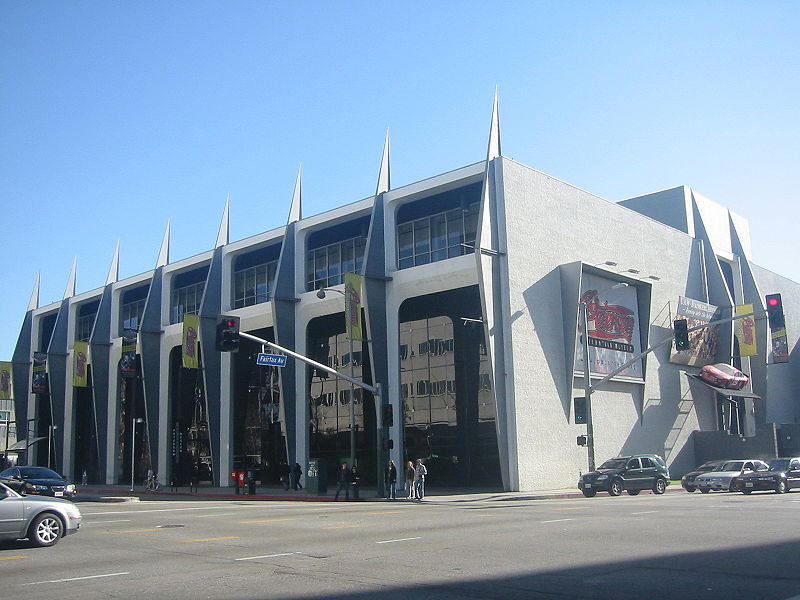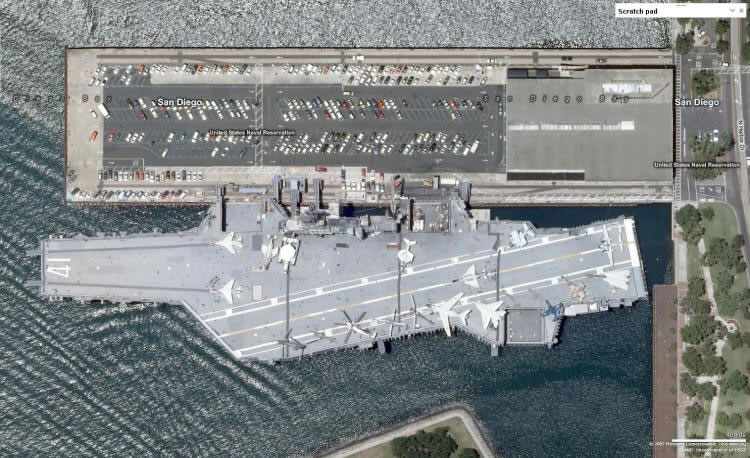We Love Our Museums & Gardens
Great places to allow your mind to expand
We Love Museums And Libraries
A museum is a building or institution that houses and cares for a collection of artifacts and other objects of scientific, artistic, or historical importance and makes them available for public viewing through exhibits that may be permanent or temporary. Most large museums are located in major cities throughout the world and more local ones exist in smaller cities, towns and even the countryside.
Take a look and cloick the picture to go to our site.
We go all the time so these are a representative set of events. To see our other visits, see our Daily Diary.
The museum's name comes from Charles Bowers, a late 1800s Orange County land developer, who donated the land on which it stands to the City of Santa Ana. The building was constructed in 1931, after the death of Ada Bowers (Charles's wife) who left the property unoccupied. The new building remained empty for four years after because the Great Depression prevented the city from paying any operating funds.
The Charles W. Bowers Memorial Museum first opened the doors of its Mission Revival-style building in 1936 as a city-run museum devoted primarily to the history of Orange County. In 1987, the City of Santa Ana closed the museum after careful study and input from the community to reopen as a totally transformed building. In October 1992, the Bowers opened its 63,000-square-foot (5,900 m2) facility (some six times larger than the original museum) to a crowd of over 17,000 people.
The California Science Center (sometimes spelled California ScienCenter) is a state agency and museum located in Exposition Park, Los Angeles. Billed as the West Coast's largest hands-on science center, the California ScienCenter is a public-private partnership between the State and the California Science Center Foundation.
Formerly known as the California Museum of Science and Industry, the Museum was remodeled in 1998 as the California Science Center . Currently it consists of the IMAX Theater, the Sketch Foundation Gallery - Air and Space Exhibits (formerly Aerospace Hall) and the Science Center itself - including the March 2010 opening of the Ecosystems exhibition wing.
We visit the Huntington Library quite often for an afternoon of food, fun and a lot of giggles! We have gone for years but the digital camera enables us to capture and share what we see. One needs a couple of days to really see it all! Our latest was August 2010 .
The Huntington Library , Art Collections and Botanical Gardens (or The Huntington) is an educational and research institution established by Henry E. Huntington in San Marino, California, USA. In addition to the library, the site houses an art collection strong in English portraits and French eighteenth-century furniture and botanical gardens that feature North America's strongest collection of cycads.
The Huntington's superb botanical gardens cover 120 acres (485,624 m²) and the theme gardens contain rare plants from around the world. The gardens are divided into over a dozen themes including the Australian Garden, Camellia Collection, Children's Garden, Conservatory, Desert Garden, Herb Garden, Japanese Garden, Lily Pond, North Vista, Palm Garden, Rose Garden, Shakespeare garden, Subtropical and Jungle Garden and a Chinese Garden under construction in the northern end of the property. In addition, a large open field planted with Eucalyptus trees serves as a re-created "Australian Outback". The Huntington has a program to protect and propagate endangered plant species.
The Richard Nixon Presidential Library and Museum is the presidential library and final resting place of Richard Milhous Nixon, the 37th President of the United States. Located in Yorba Linda, California, the library is one of twelve administered by the National Archives and Records Administration. From its original dedication in 1990 until becoming a federal facility on July 11, 2007, the library and museum was operated by a private foundation and was known as the Richard Nixon Library & Birthplace. The nine acre (36,000 m²) campus is located at 18001 Yorba Linda Boulevard in Yorba Linda, California and incorporates the National Historic Landmarked Richard Nixon Birthplace where Nixon was born in 1913 and spent his childhood. The facility is now jointly operated between NARA and the Richard Nixon Foundation.
The Petersen Automotive Museum is located on Wilshire Boulevard along Museum Row in the Miracle Mile neighborhood of Los Angeles. One of the world's largest automotive museums, the Petersen Automotive Museum is a non profit organization specializing in the education and history of the automobile. Founded on June 11, 1994 by Robert E. Petersen (who founded Hot Rod and Motor Trend magazines) and his wife, Margie, the $40 million dollar Petersen Automotive Museum is owned and operated by the Petersen Automotive Museum Foundation. Previously located within the Natural History Museum of Los Angeles County, today the museum is permanently housed in a historic 1960s department store building. It was originally built in 1962 for a short lived U.S. branch of Japanese department store chain, Seibu. Then, from 1964-1986, it operated as Ohrbach's department store.
This is a fantastic automotive museum. We go many times, please enjoy these two visits. See what is happening there now !
The Ronald Reagan Presidential Library and Center for Public Affairs is the presidential library and final resting place of Ronald Wilson Reagan, the 40th President of the United States. Designed by Hugh Stubbins and Associates, the library is located in Simi Valley, California, about 40 miles (64 km) northwest of Downtown Los Angeles and 15 miles (24 km) west of Chatsworth. The library may be accessed by driving to the Olsen Road exit of State Route 23, which connects to the nearby Ronald Reagan Freeway, State Route 118.
The Reagan Library is the largest of the twelve federally funded presidential libraries. The street address, 40 Presidential Drive, is numbered in honor of Reagan's place as the 40th President.
Visit the USS Midway . In August 1991, Midway departed Yokosuka and returned to Pearl Harbor. Here, she turned over with Independence which was replacing Midway as the forward-deployed carrier in Yokosuka. Midway then sailed to San Diego where she was decommissioned at Naval Air Station North Island on 11 April 1992 in a ceremony in which the main speaker was Secretary of Defense Richard Cheney. She was stricken from the Naval Vessel Register on 17 March 1997. During the decommissioning process she was used to film portions of the movie At Sea, a documentary on carrier life shown only at the Navy Museum in Washington D.C. Both sailors and their families participated in the filming of the homecoming scenes.
On 30 September 2003 Midway began her journey from the Naval Inactive Ship Maintenance Facility, Bremerton, Washington, to San Diego, California in preparation for use as a museum and memorial. She was docked at the Charles P. Howard Terminal in Oakland, California during the first week in October while the construction of her pier in San Diego was completed. Then, on 10 January 2004 the ship was moored at her final location at the Navy Pier in downtown San Diego, where she was opened to the public on 7 June 2004.
Visitors may tour the ship's bridge, flight deck, hangar deck, mess deck, primary flight control, Tactical Flag Command Center, enlisted and junior officer quarters, the captain's and admiral's quarters, sickbay, and an engine room. Additionally, several restored aircraft are on display on the hangar deck and on the flight deck. Self-guided audio tours are provided with admission. Events and meetings are held on board as well. There is also an amateur radio station, NI6IW, in the radio room. It is open for all ham operators to use.
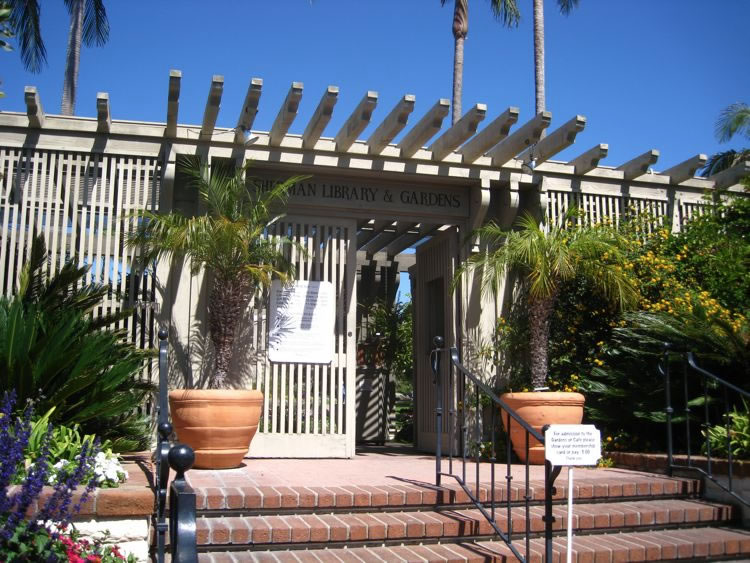
Sherman Library & Gardens - Spend a quiet afternoon in the gardens and have a nice lunch. Sherman Library & Gardens is a 2.2 acre Corona del Mar horticultural retreat. The Gardens provide a museum of living plants, displayed amidst a setting of immaculate gardens, patios and conservatories linked together by wide brick walkways, beds blooming with seasonal flowers and bubbling tile fountains. The Library is a specialized research center devoted to the study of the Pacific Southwest.
The Cafe Jardin - Dine in a “hidden oasis” amongst a serene paradise garden setting featuring a lite French and Mediterranean luncheon fare at Sherman Gardens. Enjoy soft breezes and spectacular foliage for outdoor dining, or dine inside the Great Room surrounded by glass door walls, a mosaic fireplace, exposed beams, and Spanish tiled floors. The "coastal garden" cuisine at Café Jardin marries vibrantly fresh California produce with a French pedigree. The restaurant is located in full view of the central flower gardens. Dining takes place outdoors for the most part, moving indoors in case of inclement weather - a rarity in Orange County.
The Norton Simon Museum is known around the world as one of the most remarkable private art collections ever assembled. Over a thirty-year period 20th-century industrialist Norton Simon (1907–1993) amassed an astonishing collection of European art from the Renaissance to the 20th century and a stellar collection of South and Southeast Asian art spanning 2,000 years. Among the most celebrated works he collected are Branchini Madonna, 1427, by Giovanni di Paolo; Madonna and Child with Book, c. 1502-03, by Raphael; Still Life with Lemons, Oranges and a Rose, 1633, by Francisco de Zurbarán; Portrait of a Boy, c. 1655-60, by Rembrandt van Rijn; Mulberry Tree, 1889, by Vincent van Gogh; Little Dancer Aged Fourteen, 1878-81, by Edgar Degas; and Woman with a Book, 1932, by Pablo Picasso. Highlights from the Asian collection include the bronze sculptures Buddha Shakyamuni, c. 550, India: Bihar, Gupta period, and Shiva as King of Dance, c. 1000, India: Tamil Nadu; and the gilt bronze Indra, 13th century, Nepal.
In 1974, Norton Simon and a reorganized Board of Trustees assumed control of the Pasadena Art Museum, taking up management of its building and incorporating its important collection of 20th-century European and American art with the outstanding collections of the Norton Simon foundations. Highlights from the PAM collection include the Galka Scheyer Blue Four Collection, a body of works by artists Lyonel Feininger, Paul Klee, Alexei Jawlensky, Vasily Kandinsky and others assembled by art dealer, scholar and muse Galka Scheyer; post-war American art, particularly from Southern California-based artists including John Altoon, Larry Bell, Wallace Berman, Bruce Conner, Richard Diebenkorn, Llyn Foulkes, Sam Francis, George Herms, Robert Irwin, and Ed Ruscha; and a photography collection comprised of works by Ansel Adams, Lewis Baltz, Manuel Alvarez Bravo, Imogen Cunningham, Frederick Sommer, Edward Weston, and Minor White, among others.
Artwork in the museumApproximately 1,000 works from the permanent collection of 12,000 objects are on view in the Norton Simon Museum's galleries and sculpture garden throughout the year. There are three temporary exhibition spaces within the Museum; the curatorial department mounts three to six exhibitions centered on the collection per year. To extend the impact of these exhibitions and to explore genres and themes within the permanent collection, the Museum offers six to ten free public programs per month, including scholarly lectures and symposia, adult education courses, music and dance performances and hands-on activities for children. Private tours are available by reservation.

Unique from the start, South Coast Botanic Garden is one of the world's first botanical gardens to be developed over a sanitary landfill. The Garden is a masterpiece of creative land reclamation and environment improvement for all to share. It is a living testimonial to the fact that land reclamation not only offers a practical solution to refuse disposal problems, but also beautifies and improves land values at the same time. The Garden has become a beautiful and restorative urban oasis among the hustle and bustle of a major mega-metropolitan area.
It's amazing to think that at one point in time the South Coast Botanic Garden was covered by the Pacific Ocean. In the ocean were vast populations of single cell algae called diatoms. As the diatoms died they settled to the floor of the ocean and collected, leaving behind a sediment known as crude diatomite or diatomaceous earth. It has myriad industrial uses, such as for filtration and as an insulating or strengthening component in building materials.
During the early 1900's the Dicalite Company began mining diatomaceous earth, but at this time it was mostly surface mining. By 1929, open-pit mining was being pursued. In 1944 the mine was sold to the Great Lakes Carbon Company and mining began in earnest.
By 1956, production of the mine declined and the site was sold to the County of Los Angeles. From the very beginning, the county planned to utilize the best possible technology and to reclaim the land for future use. In the meantime, the site was used as a sanitary landfill to help meet the County's growing landfill needs.
In 1961, private citizens, headed by Frances Young, prevailed upon the County Board of Supervisors to convert this site into a botanic garden. It was an exciting experiment in sanitary landfill reclamation. In April 1961, the first major planting took place with over 40,000 donated trees, shrubs and other plants. Since then, our plant collection has significantly increased to more than 200,000 plants.
From open pit mine to sanitary landfill to stupendous garden is the extraordinary history of South Coast Botanic Garden . This continuing experiment in land reclamation has drawn horticulturists from all over the world, including Prince Charles of England, to study the feasibility of similar project. The success of the reclamation effort is apparent in the peaceful, shady groves and areas of spectacular color.
The South Coast Botanic Garden has come a long way. Bursting with color and varied plant and wildlife, the grounds are a spectacular sight. The Garden has much to offer: members have access to 14 Clubs and Societies to become informed about specific plant varieties, i.e. roses, cactus, geraniums, etc. At least twelve flower shows are hosted for the members and public annually. Lectures, classes, concerts, weddings and Shakespeare fill the calendar seven days a week. All of this make South Coast Botanic Garden a year-round attraction and an "Inspiration Site" for garden ideas.
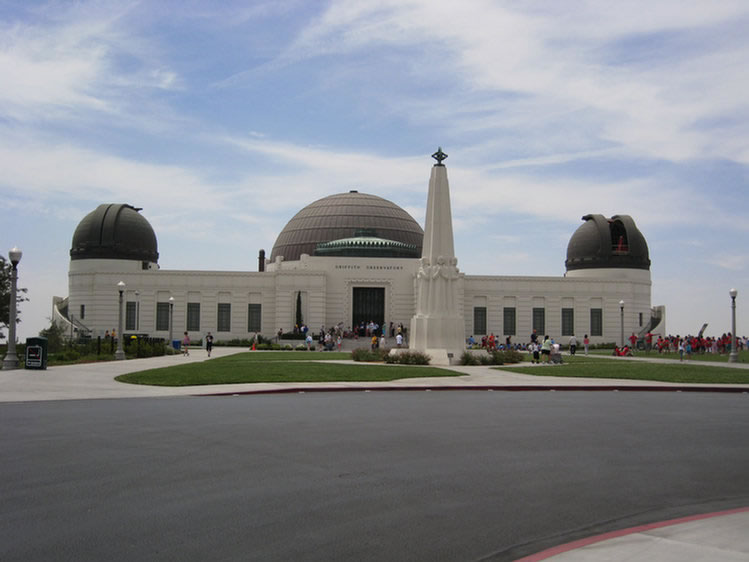
Griffith Observatory's unique architecture and setting, compelling programmatic offerings, and cinematic exposure have made it one of the most famous and visited landmarks in southern California. Tens of millions have come to walk the inside of the building, view the live planetarium shows, or simply gaze out towards the coast and the heavens. This cultural and scientific icon owes its existence to the dream of one man, Griffith Jenkins Griffith, and to the dedicated scientists and public servants who worked to fulfill his vision of making astronomy and observation accessible to all.
The Natural History Museum of Los Angeles County opened in Exposition Park, Los Angeles, California, USA in 1913 as the Museum of History, Science, and Art. The moving force behind it was a museum association founded in 1910. Its distinctive main building, with fitted marble walls and domed and colonnaded rotunda, is on the National Register of Historic Places. Additional wings opened in 1925, 1930, 1960, and 1976.
The museum was divided in 1961 into the Los Angeles County Museum of History and Science and the Los Angeles County Museum of Art (LACMA). LACMA moved to new quarters on Wilshire Boulevard in 1965, and the Museum of History and Science was renamed the Los Angeles County Museum of Natural History. Eventually, the museum renamed itself again, becoming the Natural History Museum of Los Angeles County.
The museum is the largest in the western United States, and its collections include nearly 33 million specimens and artifacts and cover 4.5 billion years of history.
Aquarium Internet Site
|
Our Visits
|
Contents
|
Sitemap

Aquarium Of The Pacific - Take a journey of discovery through the world's largest ocean at the Aquarium of the Pacific. Meet more than 12,500 animals as you explore sunny Southern California and Baja, the frigid waters of the North Pacific, and the colorful reefs of the Tropical.
The Aquarium of the Pacific is located in the city of Long Beach, California at the mouth of the Los Angeles River. The aquarium features a collection of over 12,500 animals representing almost 1,000 different species. The facility focuses on the Pacific Ocean in three major permanent galleries, Southern California and Baja, Northern Pacific and Tropical Pacific.
Construction began in 1995 and the 156,735 square foot (14,560 m³) aquarium opened in 1998. Since the aquarium is built on a site created through land reclamation in an area prone to earthquakes the facility is built on top of 1,800 cement pilings which each extend 85 feet into the ground and are surrounded by gravel. The facility filters about 900,000 gallons (3.4 million liters) of salt water per hour, the capacity of all the exhibits totals about 1,100,000 gallons (4.2 million liters).
Pacific.
Lyon Air Museum Internet Site
|
Our Visits
|
Contents
|
Sitemap

Lyon Air Museum - Founded by Major General William Lyon, Lyon Air Museum is located on the west side of John Wayne Airport in Orange County, California. Lyon Air Museum is collocated with Martin Aviation, an award winning jet, turbo-prop and piston-powered aircraft repair facility established in 1923 by famed aviation pioneer Eddie Martin. The Lyon Air Museum exhibit is comprised of authentic aircraft, rare vehicles and related memorabilia, with emphasis on the defining event of the 20th century – World War II. Through captivating and thought provoking exhibits based in historical scholarship, visitors gain a better understanding of the important role the United States plays in shaping world history.
The Mission of Lyon Air Museum is to provide a quality venue of inspiration where the stories of aviation's past can touch the lives of its visitors through educational exhibits, authentic historical aircraft and related memorabilia.
